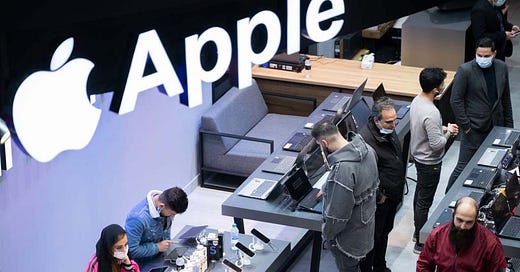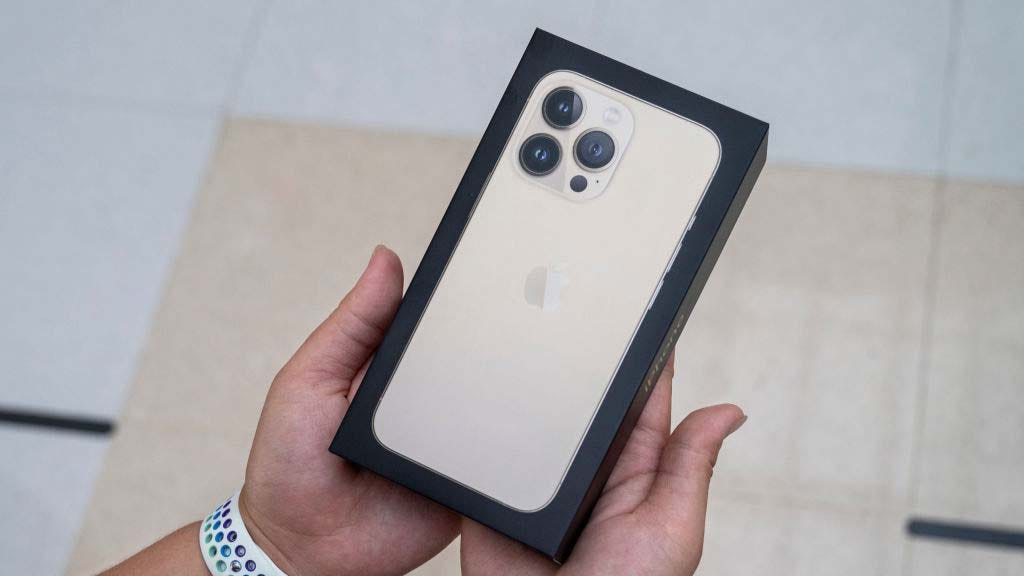
Apple's iPhone subscription program begins to make sense
More details – and the math – about how Apple's rumored iPhone subscription program could work
Apple is said to be preparing a new iPhone subscription plan, something that could extend to other Apple hardware, including the iPad and Apple Watch, but the one lingering question I got from my followers (besides where is the next PS5 restock? and when is the iPhone 14 release date) was: how is this any different from the current iPhone Upgrade Program?
More details about the new iPhone subscription program – specifically the potential math – come from Bloomberg’s Mark Gurman and his ‘Power On’ newsletter. He aptly compares the rumored iPhone subscription plan to leasing a car vs financing a car (a la the existing iPhone Upgrade program) in which you would eventually own said car/iPhone. The analogy works. A new iPhone subscription plan would change two things: it would enable Apple to more reliably get your iPhone back and allow users to upgrade to a new device on an annual or biennial basis again.
iPhone subscription changes for consumers
When I began writing about smartphones, the popular iPhone upgrade cycle was a little over once every two years. This was due to the fact that US carriers – AT&T, Verizon, T-Mobile and, at that time, Sprint – lured recently contract-free customers back into their stores, Best Buy outposts, or mall kiosks with the promise of a $199 iPhone at launch – if that customer extended their binding carrier contract. There was even a time when a ‘free’ iPhone upgrade was on the table mid-cycle if these free-agent customers re-upped with the carrier.
That began to give way for two reasons: when iPhone prices increased ($199 upfront was no longer feasible to market) and T-Mobile (and then every other American carrier) began to “ditch“ contracts and introduce monthly device fees that had you pay for these more expensive iPhones over the course of 24 months (and now spread out over the course of 36 months as phones have gotten even more expensive). It was a shell game. Essentially, all US carriers touted no-contract iPhones and no ETFs (Early Termination Fees), but still wedded everyone to monthly payment plans they no one could get out of.
Gone was the $199 incentive that subsidized a $600 iPhone at the end of a contract, and in its place was a monthly device fee you could escape by holding onto your old iPhone for a little while longer until you truly needed one. That pushed the iPhone upgrade cycle to once every three years on average – along with other factors like the fact that recent iPhones were more durable, faster and touted bigger batteries, and the realization that Apple switched to a duller tik-tok-tok (industry talk for every three years) approach to big iPhone refreshes. Why upgrade?
A new Apple iPhone subscription service could reintroduce that new iPhone-every-two-years cycle with math payment plan that works in consumers’ favor vs the current iPhone Upgrade Program by a few dollars, estimates Gurman.
iPhone subscriptions a bigger boon for Apple
What’s in it for Apple? Money. Apple already has strong loyalty among its existing smartphone customers, so this still-unannounced new iPhone subscription plan isn’t about preventing iOS users from jumping to Android, especially in the United States. iPhone users due for an upgrade are likely to get an iPhone 14 when it’s expected to launch in September. Instead, I see a new iPhone subscription service like this advantaging Apple in three ways.
First, Apple retaining ownership of your hopefully-still-working iPhone at the end of a year or two is a big deal. Apple can resell devices on the secondary market or at least reuse the valuable parts (cue: Apple’s iPhone disassembly robot Daisy). Remember, today’s iPhone is much more expensive than it was a decade ago, so it’ll be a real boon for Apple to get your iPhone back sooner rather than later. Let’s get specific: six months ago, Apple released the iPhone 13. Last month, it debuted the Apple Studio Display, which uses the A13 Bionic chipset found in the iPhone 11 series and iPhone SE 2. Apple is likely recycling valuable parts like the A13 chipset from recently turned-in iPhone 11 phones and using them in the Apple Studio Display and 9th generation iPad.
Second, there’s money being left on the table when iPhone customers who I talk to are “happy enough” with their iPhone and avoid upgrading knowing that it’ll come with a monthly device fee from their carriers. During a global economic hardship, who wants a monthly fee for a smartphone when their existing device is aged but intact? Even though the iPhone 14 is rumored to be getting a fresh design, that’s a problem for Apple – and maybe even consumer satisfaction. An iPhone subscription service with a lower monthly fee could encourage customers to upgrade to a new phone more frequently, and that’s a long-term win for Apple.
Third, as Gurman speculates, Apple could tie its Apple One bundle and AppleCare into a new iPhone subscription service. Apple One is the bundle that includes services like Apple Music, Apple TV Plus, Apple Arcade and iCloud storage. Apple One Premier adds in Apple News Plus and Apple Fitness Plus. These services, not hardware, have been Apple’s biggest growth category for several years. There’s value for consumers, too. The family and premier Apple One packages allow for family sharing with up to six people (I’ve somehow been convinced this makes economic sense for my family – you know, when we’re all using my Apple Credit Card).
Apple’s direct-to-consumer approach
In my time writing about smartphones, Apple has been the one manufacturer that’s been able to stand up to the all-powerful US carriers. Notice there’s never been a gaudy AT&T or Verizon logo on any iPhone, and carrier-imposed software present on Android phones has never exited on an iPhone out of the box.
Carriers in the United States still hold tremendous sway in 2022, even if it’s not as much of a stranglehold as it once was, so for Apple, it’s got to be a fine balancing act. I don’t foresee Apple’s reported iPhone subscription service cutting out the middleman as much as it’s likely to further sideline AT&T, Verizon, and T-Mobile. And, importantly, it’ll get Apple customers excited about routine iPhone upgrades again, maybe just in time for the iPhone 14 launch in five months’ time.





